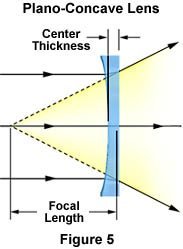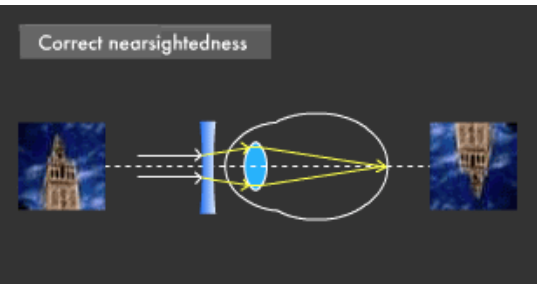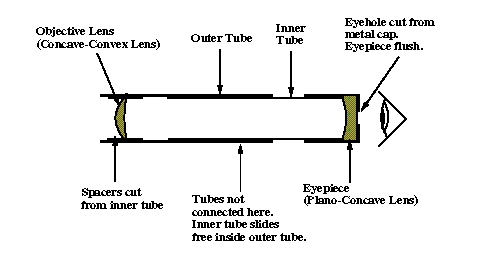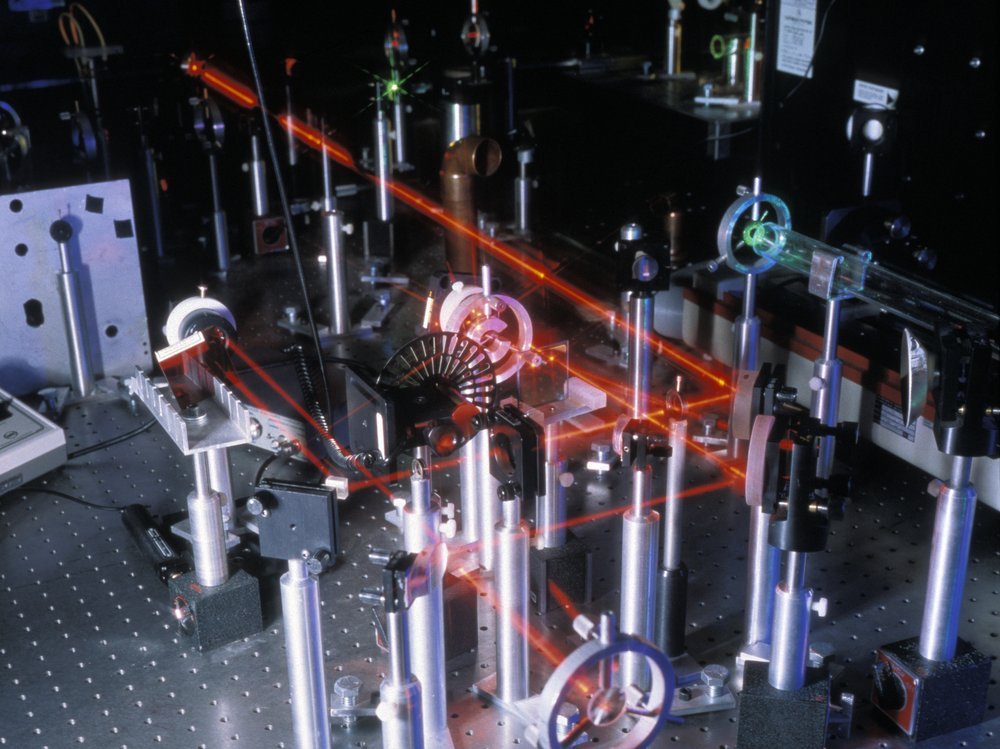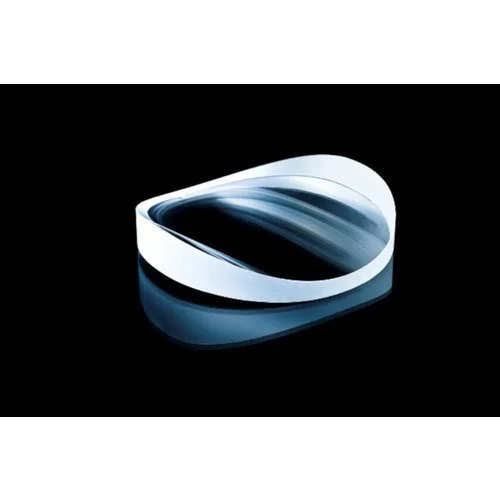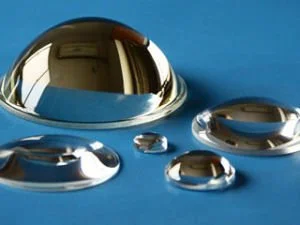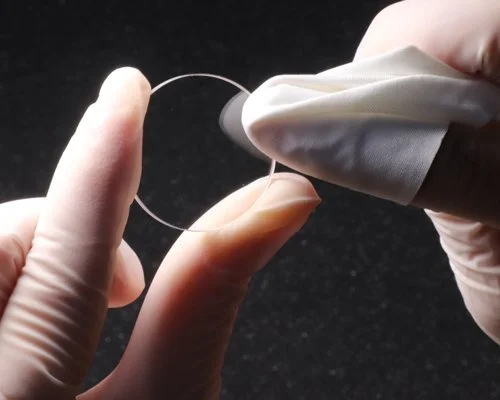Optical Lenses
Optical lenses are components that focus or disperse a light beam toward or away from specific targets. Lenses are made from materials that are transparent across specific wavelength ranges depending on the application. Optical lenses can be crafted with various properties such as Plano-Convex or Bi-Convex, which focuses light on a point while Plano-Concave and Double-Concave diverges the light beams.
Aspheric lenses contain at least one surface that is neither cylindrical or spherical and are used to correct spherical aberration while chromatic lenses are used to correct color/chromatic aberrations.
Firebird also offers a number of custom lenses such as ball lenses, fresnel lenses, laser lenses and more.
Reach out to us at info@firebirdoptics.com for more information.
Plano-Concave Lenses (Singlet Spherical Lenses)
Plano-Concave Lenses (Singlet Spherical Lenses)
Plano-concave lenses split a collimated beam and forces the parallel input rays to diverge on the other side of the lens. This type of lens is also referred to as a negative or diverging lens. These types of lenses are commonly used in Galilean telescopes but are also common in optical systems to balance out aberrations caused by other lenses in the system.
Firebird Optics has a number of different lenses that enable UV-VIS all the way out to IR applications.
A Basic Guide to the Plano-Concave Lens
The plano-concave lens is a staple in many optical setups and is an optical lens with one surface being concave and one side being flat. The “concave” refers to the lens curving inward, which diverges parallel rays as opposed to the plano-convex lens, which converges parallel rays into a single point. Often used in imaging instruments, light collimators, telescopes and magnifiers, this is an essential optical component in most systems.
The inward bowing produces what’s commonly referred to as a negative focal length. This means that the focal point (or the point at which the light converges) is on the same side of the lens as the origin of the light rays.
THE LENS YOU NEED TO SPREAD THE LOVE!
Various Applications for Plano-Concave Lenses
Eyeglasses
One of the first recorded uses of corrective eyeglasses was in Pliny the Elder’s account of the Roman Emperor Nero using a modified emerald to view gladiatorial matches. The emerald was hollowed out at the back forming the world’s first recorded plano-concave lens, which would have assisted his sight in seeing the battle in the arena.
This principle survives into the modern age with corrective optics being used to treat the condition of nearsightedness, also known as myopia. This is a condition in which close objects appear clearly but objects that are far away appear as blurry. This condition comes from the distance between the eye’s lens and retina being longer than it should be.
Placing a concave lens in front of a nearsighted eye reduces light refraction and lengthens the focal length so that the image is formed on the retina, bringing far away objects back into focus.
NEAR, FAR, WHEREVER YOU ARE
SOURCE: HTTPS://GLOBAL.CANON/EN/TECHNOLOGY/S_LABO/LIGHT/003/02.HTML
Peepholes in Doors
The peephole enables viewers to peek outside of their doors to determine whether they will answer the door or pretend to be not home. The lenses are configured in such a a way in that viewing is only possible in one direction with the opening typically being smaller than a dime.
The peephole’s optics consists of one convex lens and three plano-concave lenses. Rays of light from a wide angle are funneled through an array of plano-concave lenses to form an image with a convex lens serving as the eyepiece. If someone attempts to see from the outside in, their eye can only see a small range of angles and a tiny bit of light. You are now safe to hide from the door-to-door encyclopedia salesmen.
JEEPERS PEEPERS! LOOK OUT FOR CREEPERS! SOURCE: HTTPS://MAMMOTHMEMORY.NET/PHYSICS/LENSES/CONCAVE-LENSES/CONCAVE-LENS-USE--PEEPHOLE-OR-DOOR-VIEWER-OR-SPY-HOLE.HTML
Telescopes
First constructed in 1609 by famed Italian astronomer Galileo Galilei, the Galilean telescope was able to see spots on the sun, phases of Venus and even hills on the surface of the moon! Not bad for the 17th century. A Galilean consists of one convex lens and one plano-concave lens set a given distance away from each other.
The plano-concave lens in this configuration functions as the eyepiece with the flat (plano) side facing the eye, while the convex lens is the objective lens. The eyepiece is situated in front of the focal point of the objective at a distance from the focal point equal to the focal length of the eyepiece. This simple refracting telescope generates a smaller, upright “virtual image”.
The largest known version of this telescope made it to a length of just over 3 feet and produced a 30x magnification. Unfortunately, this design left much to be improved as there was a narrow field of view and a blurry image.
GALILEO, FIGARO- MAGNIFICO!
SOURCE: HTTP://GALILEO.RICE.EDU/LIB/STUDENT_WORK/ASTRONOMY96/MTELESCOPE.HTML
Flashlights
In its role as a beam expander, the most illuminating (see what we did there?) example of this is the standard flashlight. As the rays from the light source pass through the plano-concave lens inside, the light beams slow down and refract causing the light to be cast on a wide field of vision. This light-diverging property of the lens can be adjusted in many flashlights by adjusting the distance between the light source and the plano-concave lens.
BEAM ME UP!
Use in Laser Systems- Beam Expander
Up until this point we have mostly discussed low-cost, basic BK7 versions of the plano-concave lens.
When it comes to high power laser applications, we will need to up the specs on our lenses. These types of laser grade lenses can be made from fused silica or a range of IR materials that have high damage thresholds and low thermal expansion coefficients. Optical coatings such as AR (anti-reflective) coatings are common with laser systems.
As in the other applications, this type of plano-concave lens is used to diverge collimated laser beams and expand the beam similar to a flashlight. In this type of setup, also known as a beam-expander, a plano-concave lens is often used with other lenses such as biconvex lenses to make the beam larger. The concave lens should be facing the light source in order to reduce spherical aberration.
sharks with laser beams would have been better but this will suffice
What you get with a Firebird Optics Plano-Concave Lens:
Each lens goes through a thorough inspection process before leaving our factory.
Comes in several different materials: Optical Glass, UV Fused Silica, and CaF2.
Diameters ranging from 12.7-50.8mm.
Effective Focal Lengths (EFL) range from -100 to -200mm.
Comes with optional optical coatings on request.
Specs:
Lens shape: plano-concave
Surface quality: 40-20 scratch-dig
Surface flatness: λ/4
Surface accuracy: 1.5 λ
Chamfers Angle/Tolerance: 45° ±15°
Clear aperture: ≥ 90% of surface area
Final Notes
Firebird Optics provides a full product line of plano-concave lenses from optical glasses, fused silica and a range of IR materials. You can check our website for our full and expanding offering of optical lenses. If you still can’t find what you need, please send us an e-mail to info@firebirdoptics.com
Happy hunting!
Firebird Optics






